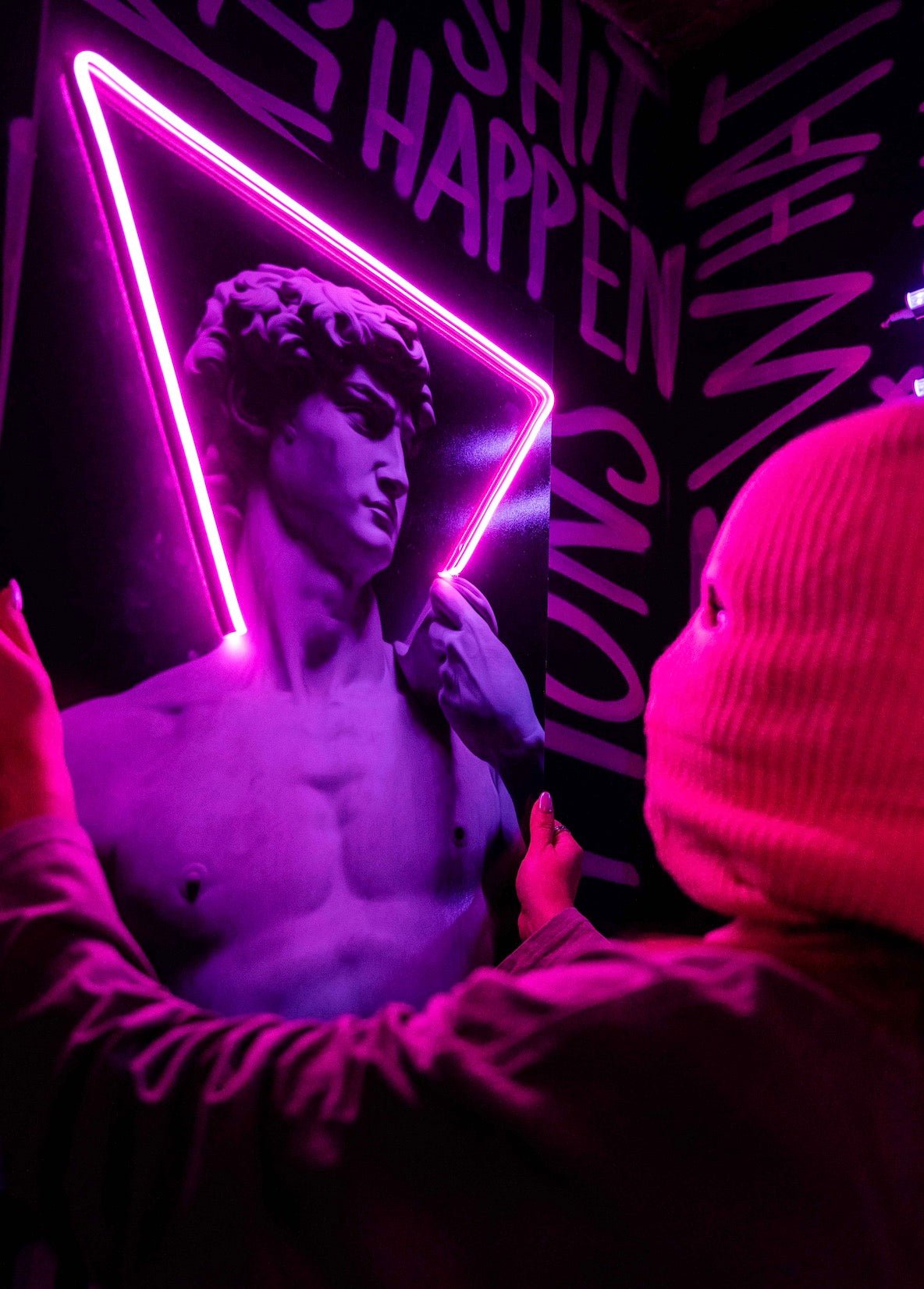Article: 3 Famous Pop Art Paintings and Artists in a Modern Key

3 Famous Pop Art Paintings and Artists in a Modern Key
The world of art is an ever-evolving universe, where styles and movements intertwine to create timeless masterpieces.
In today's article, we dive into the vibrant and colorful world of Pop Art, an artistic movement that revolutionized the cultural landscape of the 20th century.
We will explore three of the most famous works of this genre, analyzing the artists who created them and the stories hidden behind their vivid colors and bold images.
From a modern reinterpretation of icons and consumer images, we will discover how these artists have transformed the everyday into extraordinary art, influencing generations of creatives and enthusiasts. Join us on this journey to discover "3 Famous Pop Art Paintings and Artists in a Modern Key," and let yourself be inspired by their stories and their impact on contemporary art.
Pop Art, with its bold and colorful images, has left an indelible mark on the history of art. This movement has given life to works that remain cultural icons even today.
The first work that stands out in this panorama is undoubtedly Andy Warhol's "Marilyn" series.
Warhol, a key figure in the Pop Art movement, transformed the image of actress Marilyn Monroe into a pop icon. Using the technique of screen printing, he reproduced her image in a series of vibrant colors, turning a photograph into a symbol of mass culture. This approach questioned the boundaries between art and advertising, elevating a commercial image to the rank of high art.
Another masterpiece of the Pop Art movement is Roy Lichtenstein's "Drowning Girl."
This work stands out for its comic book-inspired style, characterized by bold lines and the use of dotting to create tones and shades. Lichtenstein took a melodramatic cliché from the world of comics and transformed it into an ironic comment on culture and society.
The work expresses a sense of despair in an exaggerated way, reflecting the artist's fascination with the representation of tragedy and emotion in a graphic and stylized manner.
Finally, Lichtenstein's "Hopeless" is another emblematic work worth mentioning. This work depicts a crying woman, a recurring theme in his works, using the same comic book-inspired style. Lichtenstein's use of vibrant colors and graphic approach communicate a deep sense of sadness while remaining faithful to the pop aesthetic. The image captures the viewer's attention not only for its visual impact but also for the way it challenges artistic conventions, mixing high art and popular culture.
These works, along with others from the Pop Art movement, have redefined the way art can capture and comment on contemporary culture, creating a dialogue between the artist, the work, and the audience.
The Ultimate Expression Encapsulated in Two Great Artists: Andy Warhol and Roy Lichtenstein
Andy Warhol, born Andrew Warhola in 1928 in Pittsburgh, Pennsylvania, is one of the most influential artists of the Pop Art movement. Growing up in a family of Czech immigrants, Warhol showed an early interest in art, attending classes at the Carnegie Institute of Technology.
After graduating, he moved to New York, where he began his career as a commercial illustrator. His unique style and ability to capture the essence of American pop culture quickly made him famous. In the 1960s, Warhol began experimenting with screen printing, creating some of his most famous works, such as the series dedicated to Marilyn Monroe and Campbell's Soup Cans. His studio, the Factory, became a famous meeting point for intellectuals, drag queens, artists, and celebrities.
Warhol was not just a painter but also a director, music producer, and author, and his influence extended well beyond the art world, touching cinema, music, and literature as well.
Roy Lichtenstein, born in 1923 in New York, was another pillar of the Pop Art movement. After studying at Ohio State University, his artistic career was temporarily interrupted by military service during World War II.
Returning to civilian life, Lichtenstein resumed his artistic studies and began teaching, exploring various styles and techniques. His interest in print and commercial images led him to develop his distinctive comic book-inspired style in the 1960s. These works, with their bold lines and use of dotting, challenged traditional artistic conventions and questioned the role of art in consumer society.
Lichtenstein also explored other themes, including landscapes and interpretations of classic artworks, always maintaining his distinctive and ironic approach. His ability to merge high and low culture in visually compelling works has left an indelible mark on the world of modern art.

